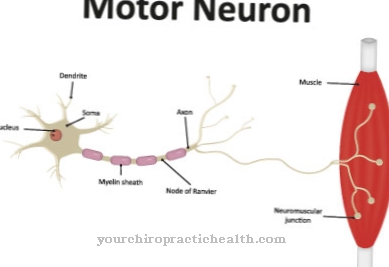The Internal carotid artery is also as internal carotid artery known and supplies parts of the brain with arterial blood. Together with the external carotid artery, it emerges from the common carotid artery. The internal carotid artery is particularly susceptible to arteriosclerosis and smaller aneurysms.
What is the internal carotid artery?
The common carotid artery is one of the most important arteries in the human body. The pathway of the arterial blood vessel supplies a large part of the neck and head area with nutrients and oxygen. The artery arises on the right side of the brachiocephalic trunk and emerges on the left side directly from the aortic arch.
At the so-called carotid fork (Bifurcatio carotidis) it divides into the internal and external carotid arteries. The first part corresponds to the inner carotid artery and can be divided into four parts depending on the course and the surrounding structures. From caudal to cranial these parts correspond to the pars cervicalis, petrosa, cavernosa and cerebralis. Except for the cervical part, all parts give off several branches.
In neuroradiology, a cervical segment of the internal carotid artery is distinguished from a petroleum, a laceric, a cavernous, a clinoidal, an ophthalmic and a terminal segment. The external carotid artery is usually weaker than the external carotid artery. There are several connections between the two arteries.
Anatomy & structure
The exit of the internal carotid artery (carotid sinus) carries pressure receptors. In addition, there are chemoreceptors at the origin of the artery, which are located within the carotid body. In the pars cervicalis, the artery extends from the outlet to the base of the skull, which is pierced by the artery through the outer opening of the carotid canal (carotid canal).
In the initial area, the internal carotid artery lies behind the external carotid artery and reaches the base of the skull in the middle. The pars petrosa runs upwards in the temporal bone. On the front wall of the tympanic cavity (paries caroticus), the part forms a central arc forward in the direction of the sphenoid body. Several branches branch off to the tympanic cavity (Arteriae caroticotympanicae) and the canalis pterygoideus (Arteria canalis pterygoidea). At the inner opening of the carotid canal, the dura mater encases the inner carotid artery, which rests here on the foramen lacerum.
Between the wall of the carotid canal and the internal carotid artery lies the plexus internal carotid plexus, which connects the cavernous sinus with the pterygoid plexus. On the inside of the skull base, the internal carotid artery runs through the cavernous sinus. The pars cavernosa takes an S-shaped arch forward and upwards. This carotid siphon sends branches to the neurohypophysis (arteria hypophysialis inferior), to the trigeminal ganglion (Rami ganglionares trigeminales), to the mines (Ramus meningeus) and to the sinus cavernosus (Ramus sinus cavernosi).
The artery breaks through the hard meninges in the middle of the anterior clinoid process and becomes the cerebral part in the subarachnoid space. In the course upwards and forwards, the part is directly the ophthalmic artery, which reaches the eye with the optic nerve and gives off the posterior communicating artery. In addition, the internal carotid artery divides in this part into the cerebral cerebral arteries anterior and media.
Function & tasks
The internal carotid artery supplies parts of the brain and the eye with oxygen-rich blood and also ensures that the tissues are supplied with nutrients and messengers. The cervical part of the blood vessel corresponds, for example, to the neck part and accordingly supplies the neck area. The pars petrosa corresponds to the part of the petrous bone that primarily supplies the tympanic cavity.
The pars cavernosa, on the other hand, is involved in supplying the trigeminal ganglion, the neurohypophysis and the hard meninges. The pars cerebralis has the most important tasks. This part supplies parts of the brain (arteria choroidea anterior) with arterial blood. In addition, the internal carotid artery is an important artery for cardiovascular regulation. Like all arteries, it has smooth muscle cells inside. In addition, there are pressure receptors at their outlet, which permanently inform the nervous system about the blood pressure in the arterial system.
The autonomic nervous system can use the information obtained in this way to carry out counter-regulation and, if necessary, adjust the heart rate and blood pressure, for example. The cardiovascular center of the brain also processes information from the receptor area of the carotid sinus reflex, which is used to stabilize central blood pressure. The chemoreceptors in the carotid body of arterial origin also transmit the pH value as well as the content of carbon dioxide and oxygen in the blood to the nervous system. The information transmitted in this way plays an essential role in the breathing reflex.
Diseases
The initial segment of the internal carotid artery is particularly susceptible to arteriosclerosis (hardening of the arteries). Atherosclerotic processes are a widespread disease with extreme prevalence in the 21st century, which is now one of the most common causes of strokes and heart attacks.
The plaques of thrombi, connective tissue, fats and calcium that are deposited there narrow the vascular lumen and can cause carotid stenosis or trigger an embolism that leads to a cerebral infarction. In addition, the hardening of the artery in this area can tear due to pressure in the event of acute vascular occlusion. Often the tear is also the beginning of the arteriosclerotic processes, since the inflammation caused in this way can trigger an initial overgrowth of the connective tissue.
Within the skull, the internal carotid artery is also predestined for aneurysms, the rupture of which can cause a highly acute stroke in the sense of a subarachnoid hemorrhage. Apart from this, the venous plexus in the pars petrosa of the inner carotid artery plays an essential role in the development of bacterial meningitis (meningitis).

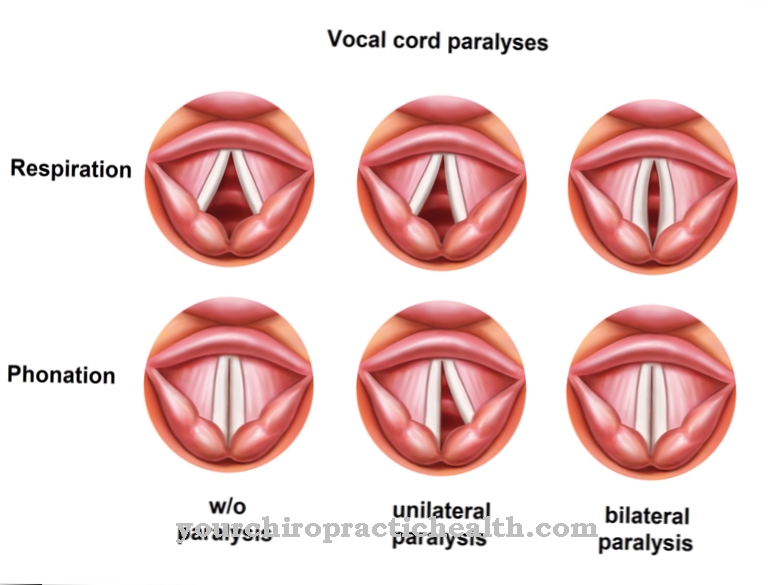
.jpg)
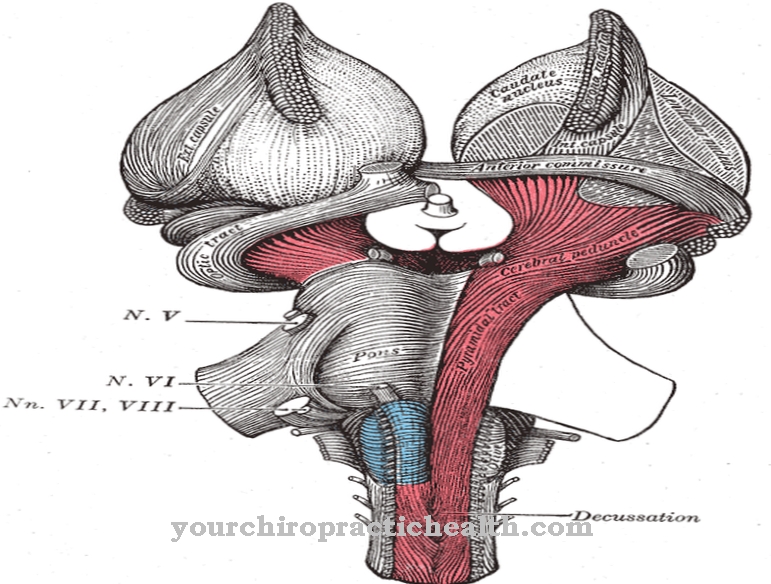


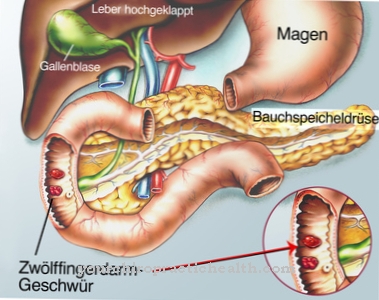

.jpg)
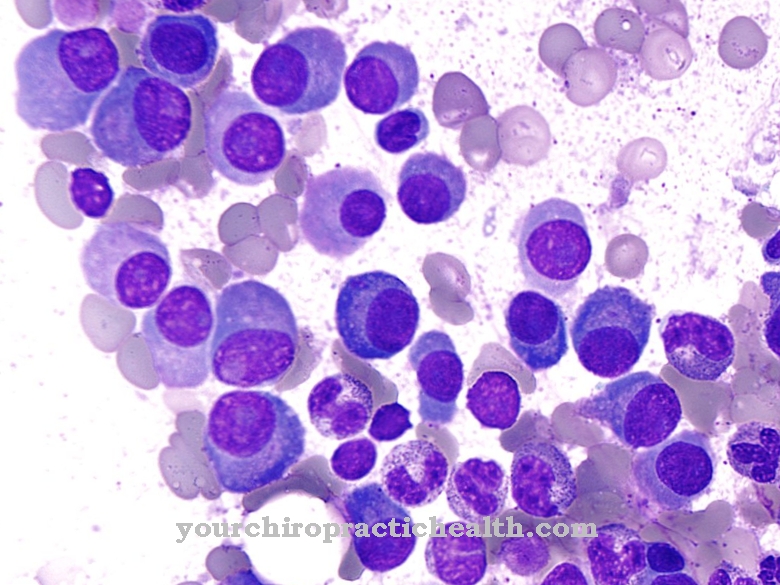

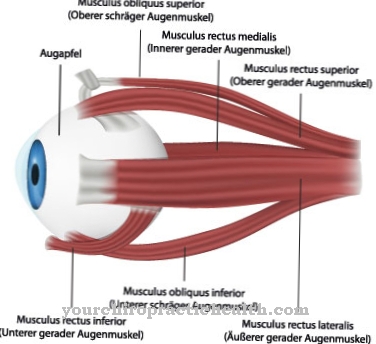




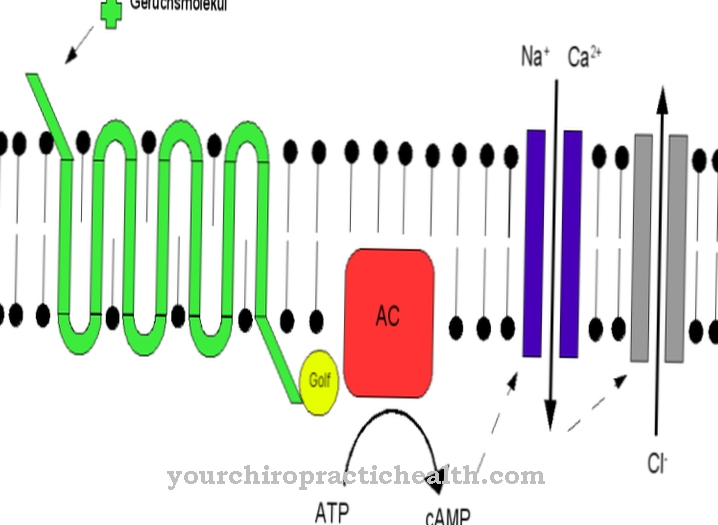
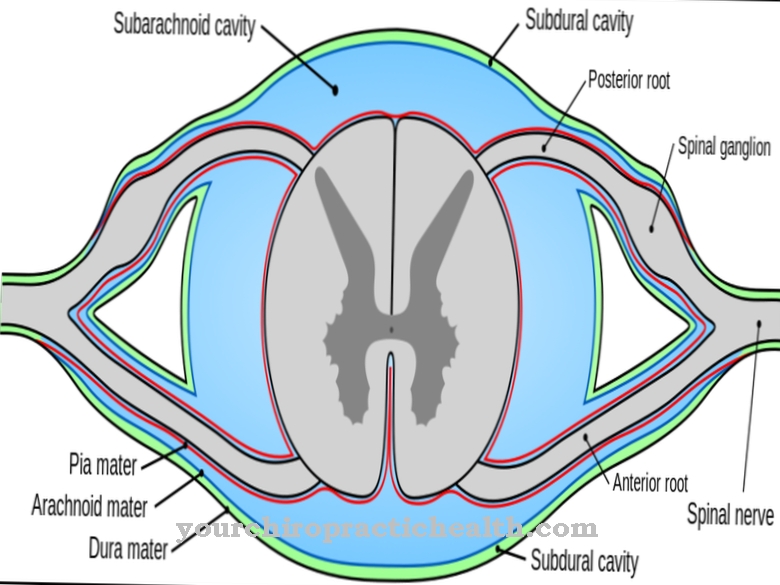

.jpg)
.jpg)





